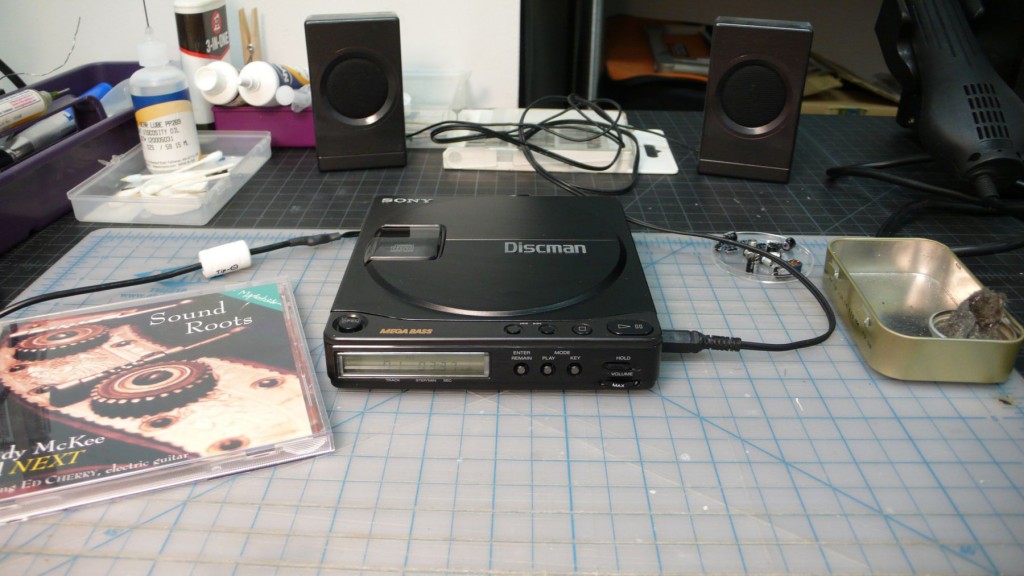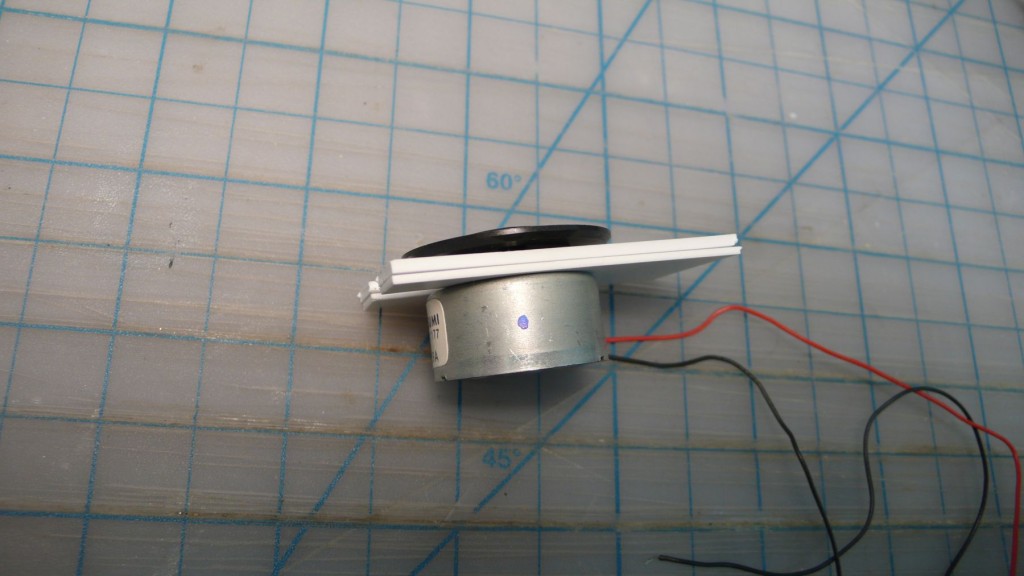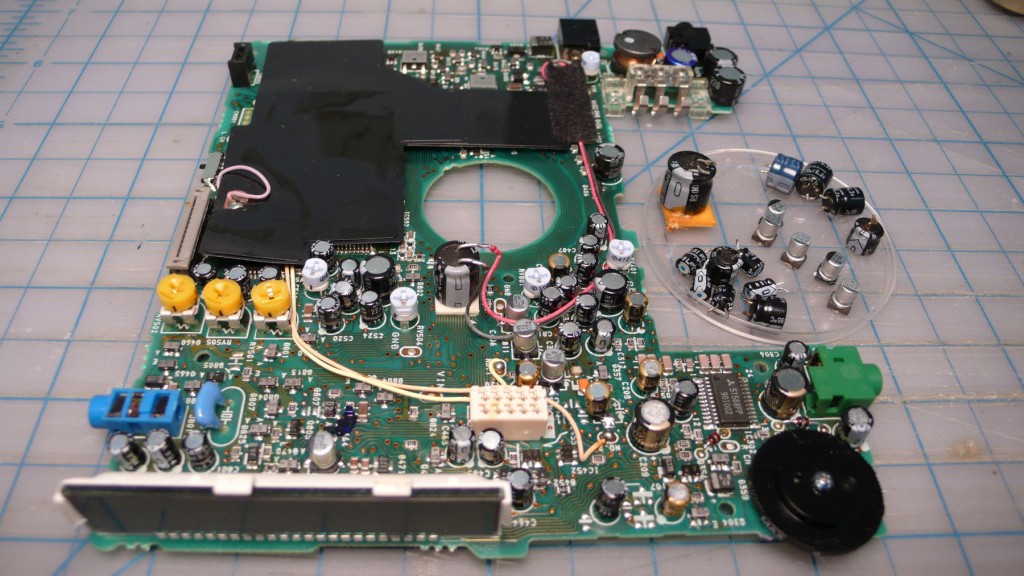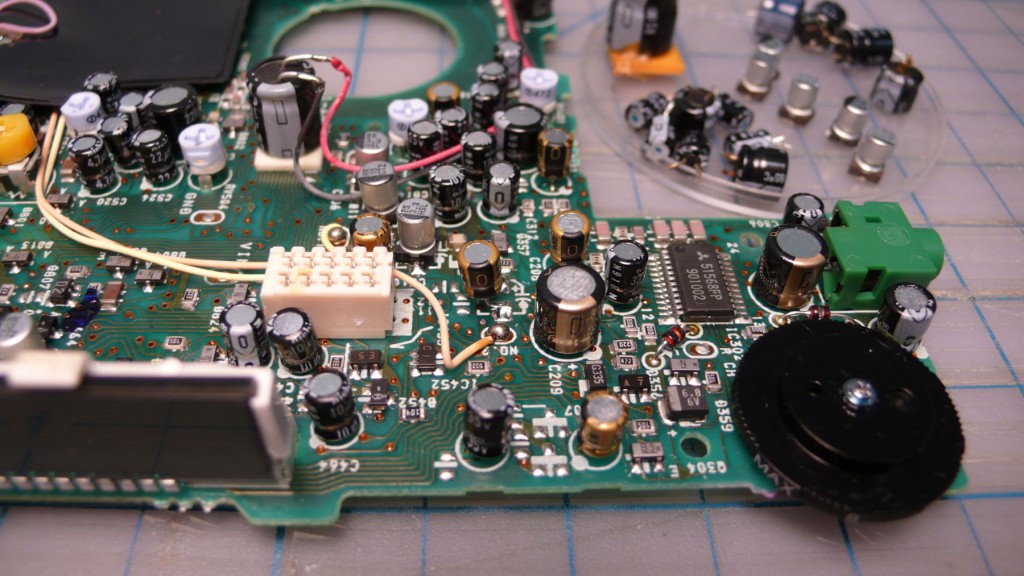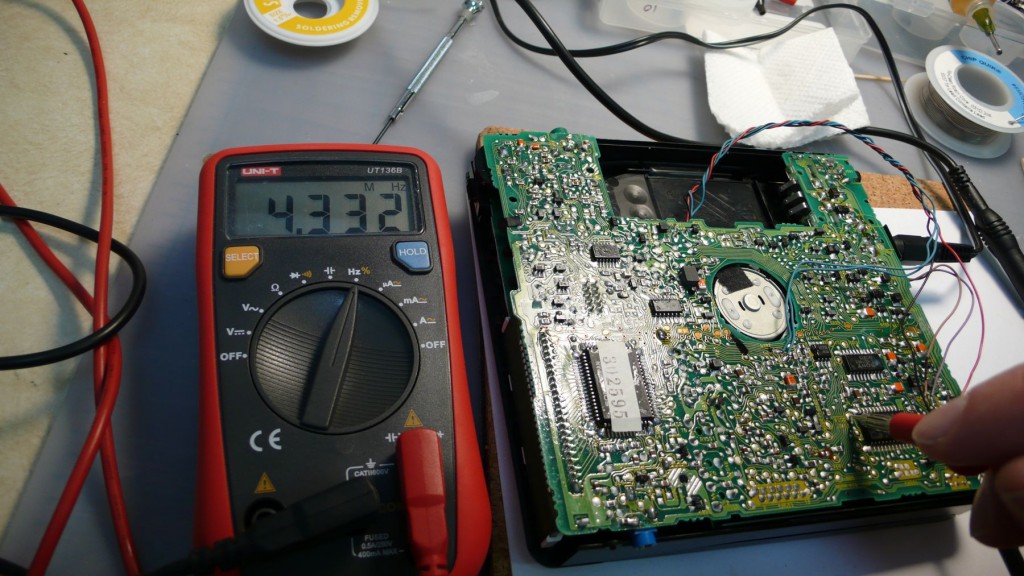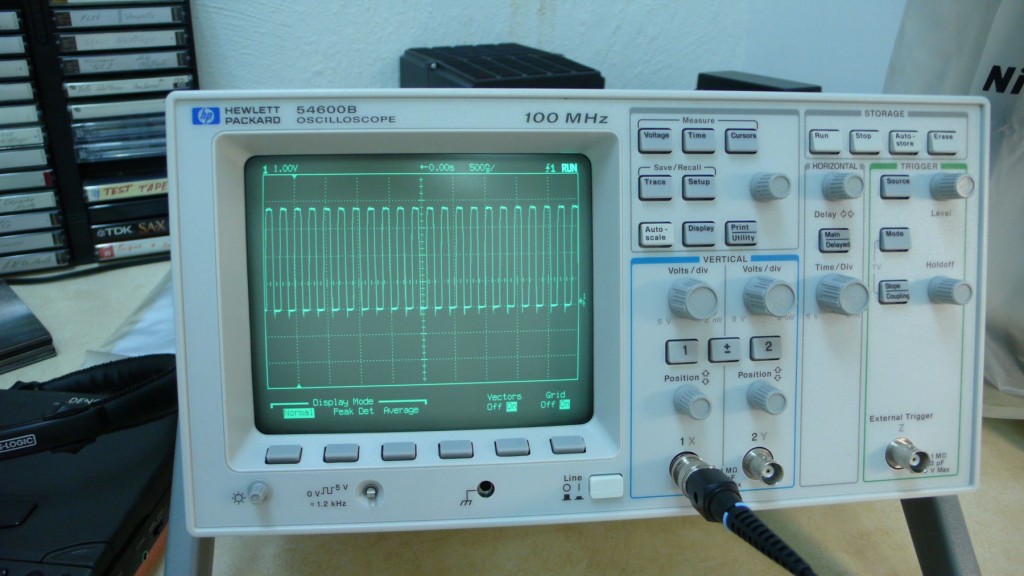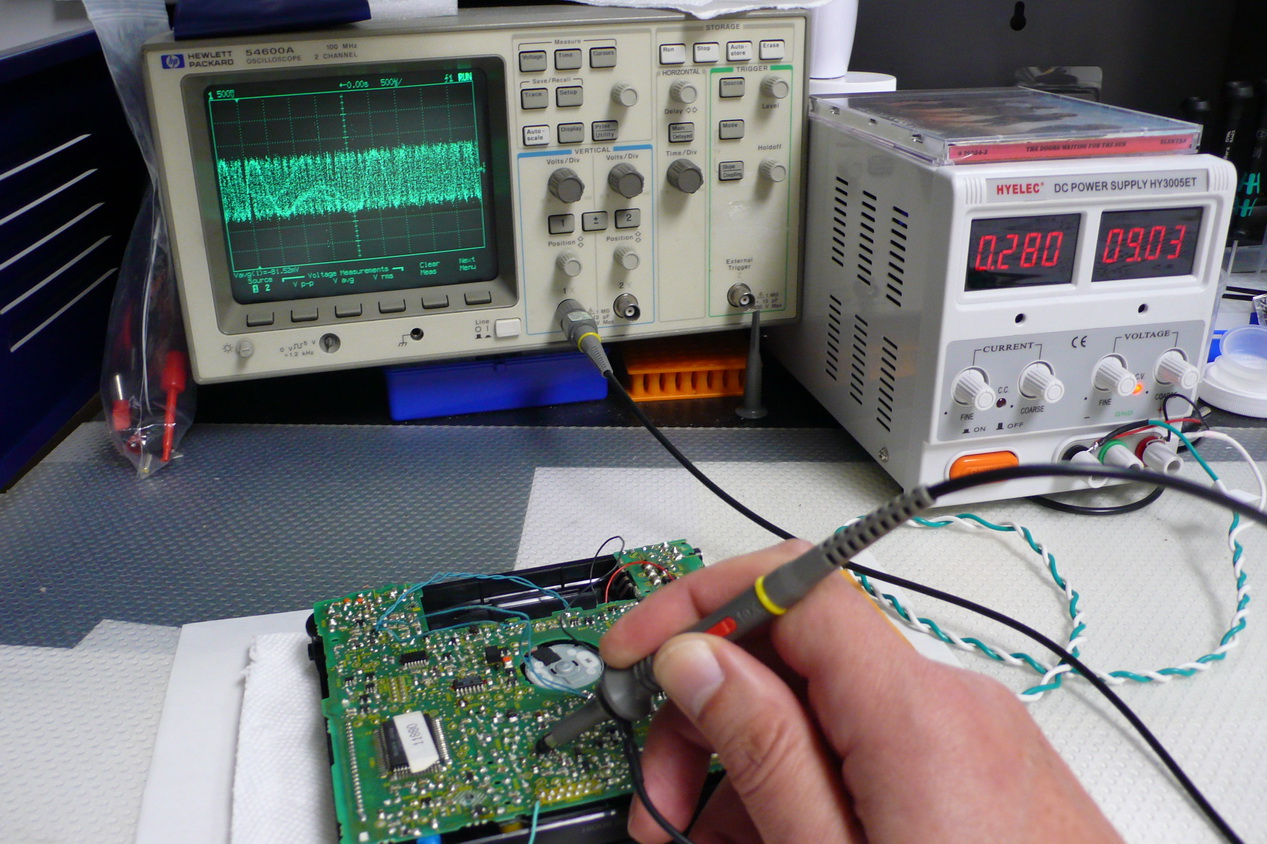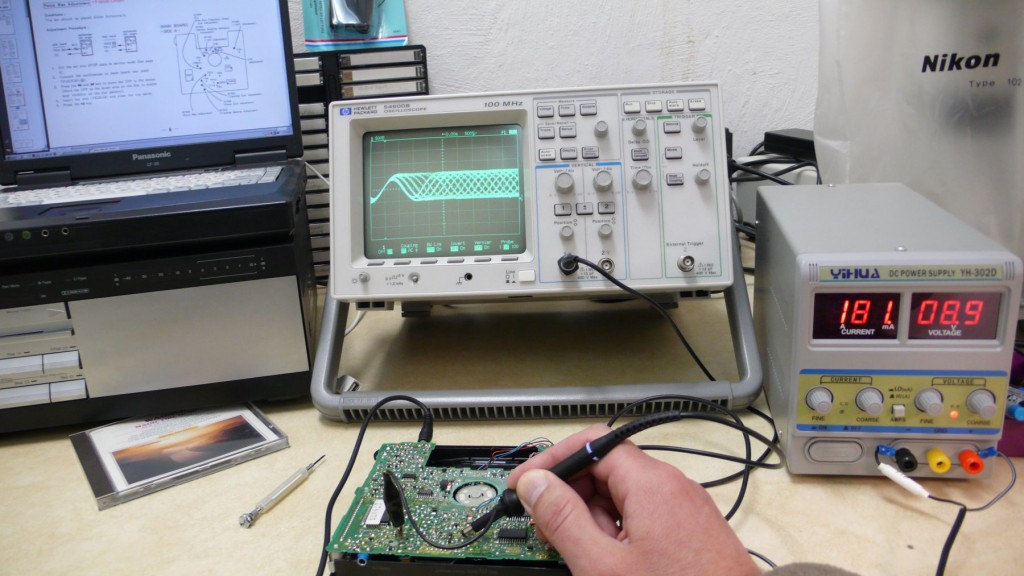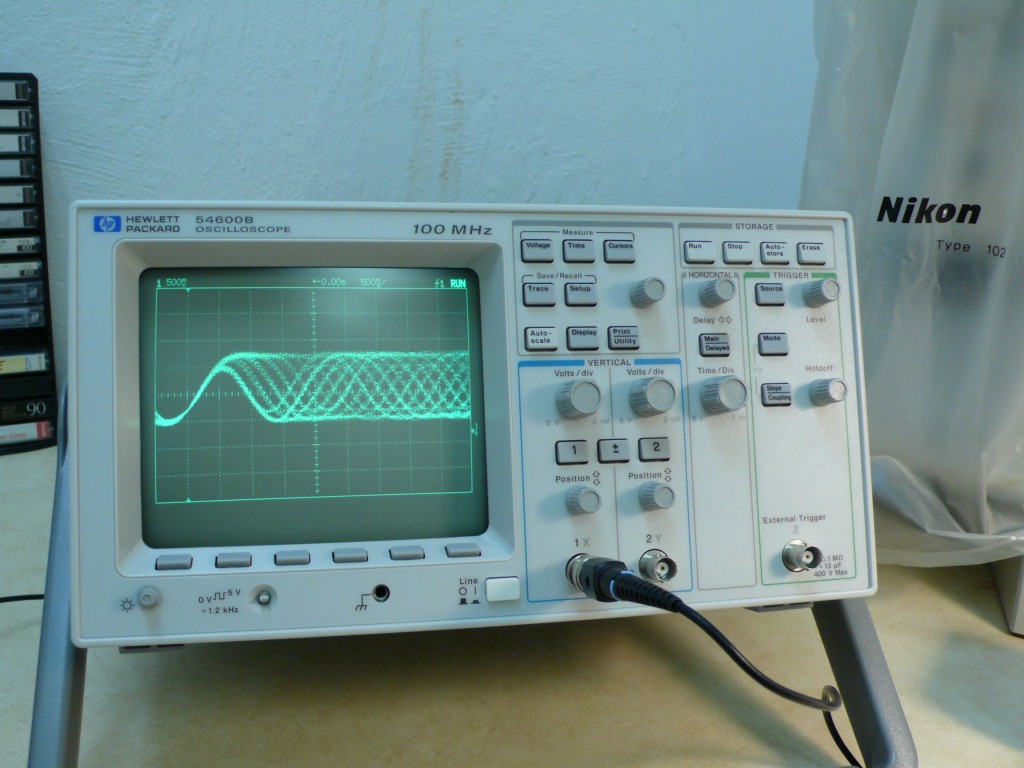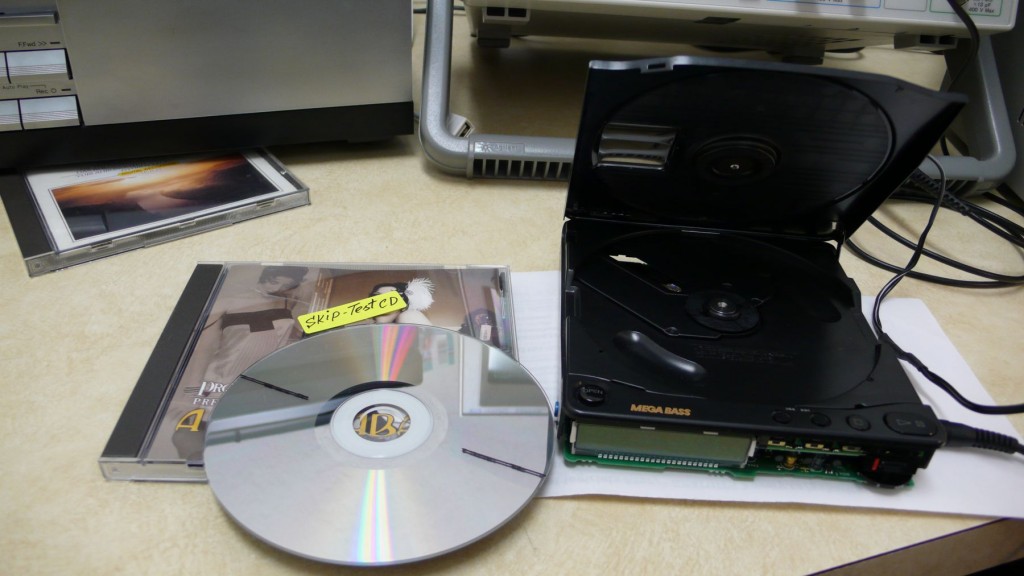Sony D-90 is a very special Discman. In 1990 this model was selected for an “upgrade” with 1-bit DAC, Discman D-99 was born. Once cheap 1-bit DACs found their way into CD players, it was a matter of months before the race for the “most affordable” player began. We all know how it ended. Opening the way to the slippery slope of ultra-affordable digital, D-90 symbolizes the end of “Classic” Discmans and the end of quality sound reproduction in portable devices. Audiophiles of the 80-ies thought that CD introduction was the beginning of the Dark Ages of home audio. They were right, it was just the beginning, then came MP3, free downloads and “most folks cannot hear the difference” brainwash.
Another unique characteristic of D-90 is its short life-span. With some luck there is still a chance to get D-50, the very first Discman, in perfect working condition. But ALL original D-90 are dead by now. 100% of surface-mount electrolytic capacitors failed at some point between 1990 and 2015. Bad batch of SMD electrolytics? Probably…
One weird technicality not found in any other Discman is that Right channel has 4.7uF/16V “thru hole” electrolytic capacitor in the signal path, but Left channel has 4.7uF/35V surface-mount cap. This SMD cap (C220 on schematics) fails first. When restoring D-90, I always substitute failed C220 for “thru hole” 4.7uF/16V Rubycon electrolytic. I do not care if I can hear the difference or not, both L and R channels must pass through the same parts.
Below is a step-by-step Resurrection procedure for D-90. This is the first thing you see once you remove the bottom plate: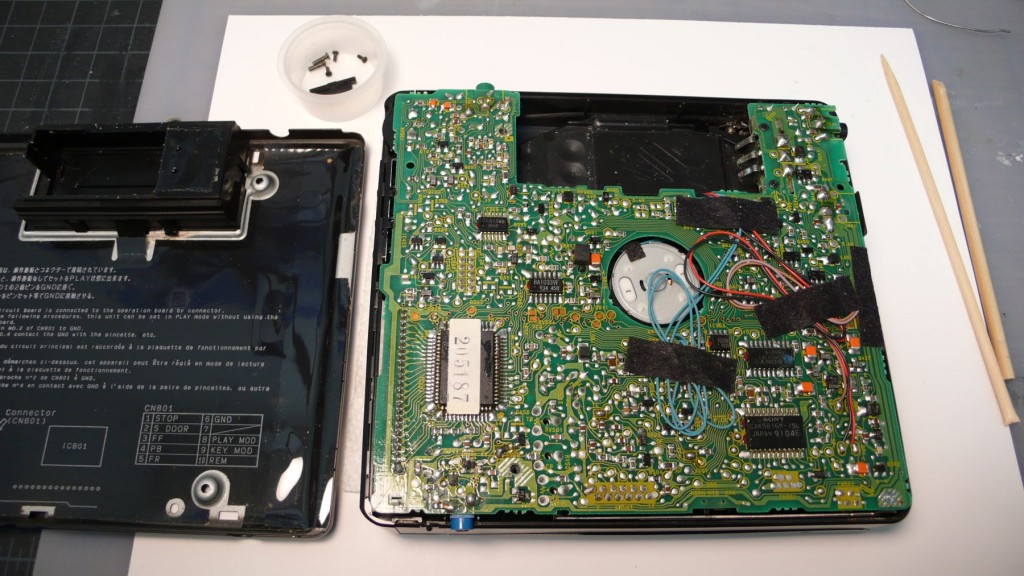
desolder six CD transport wires (spindle and sled motors and center-stop switch) plus one ground wire, disconnect two flex boards and flip the main board: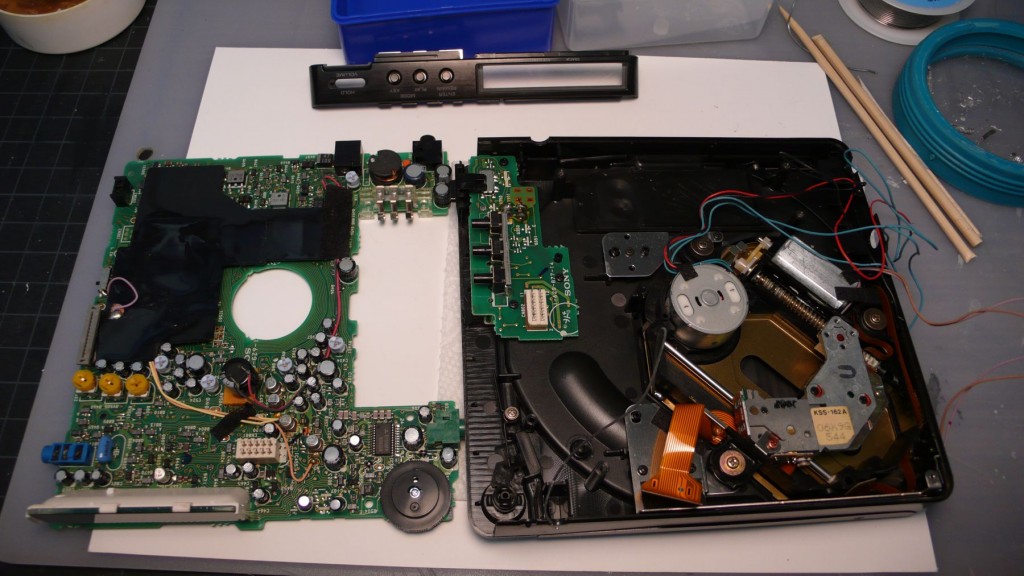
Mechanical problems must be dealt with first. The infamous “middle gear” must be removed, cleaned and re-lubed. Its brass pin must be polished, loop of a cotton thread usually does the trick: 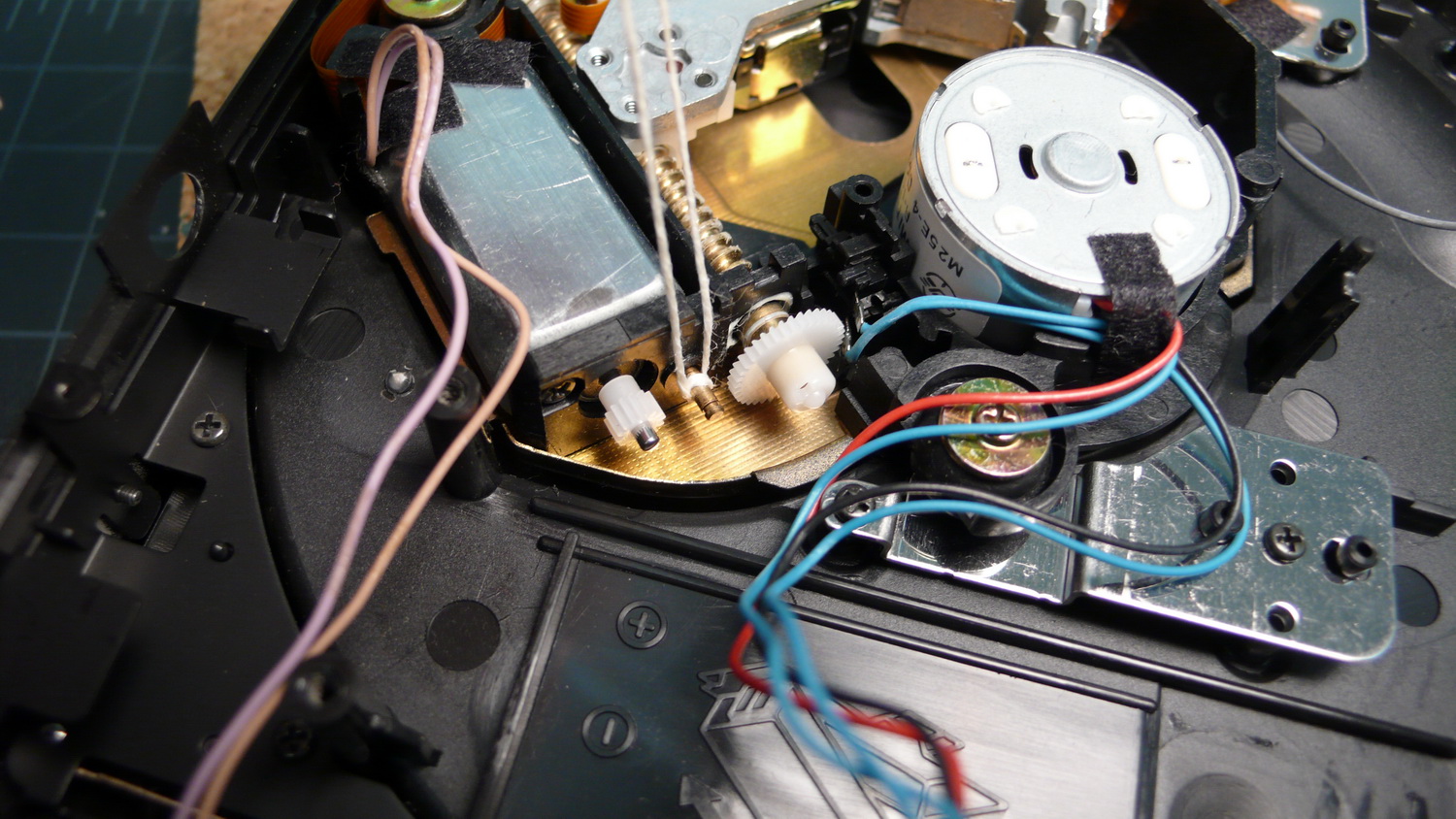
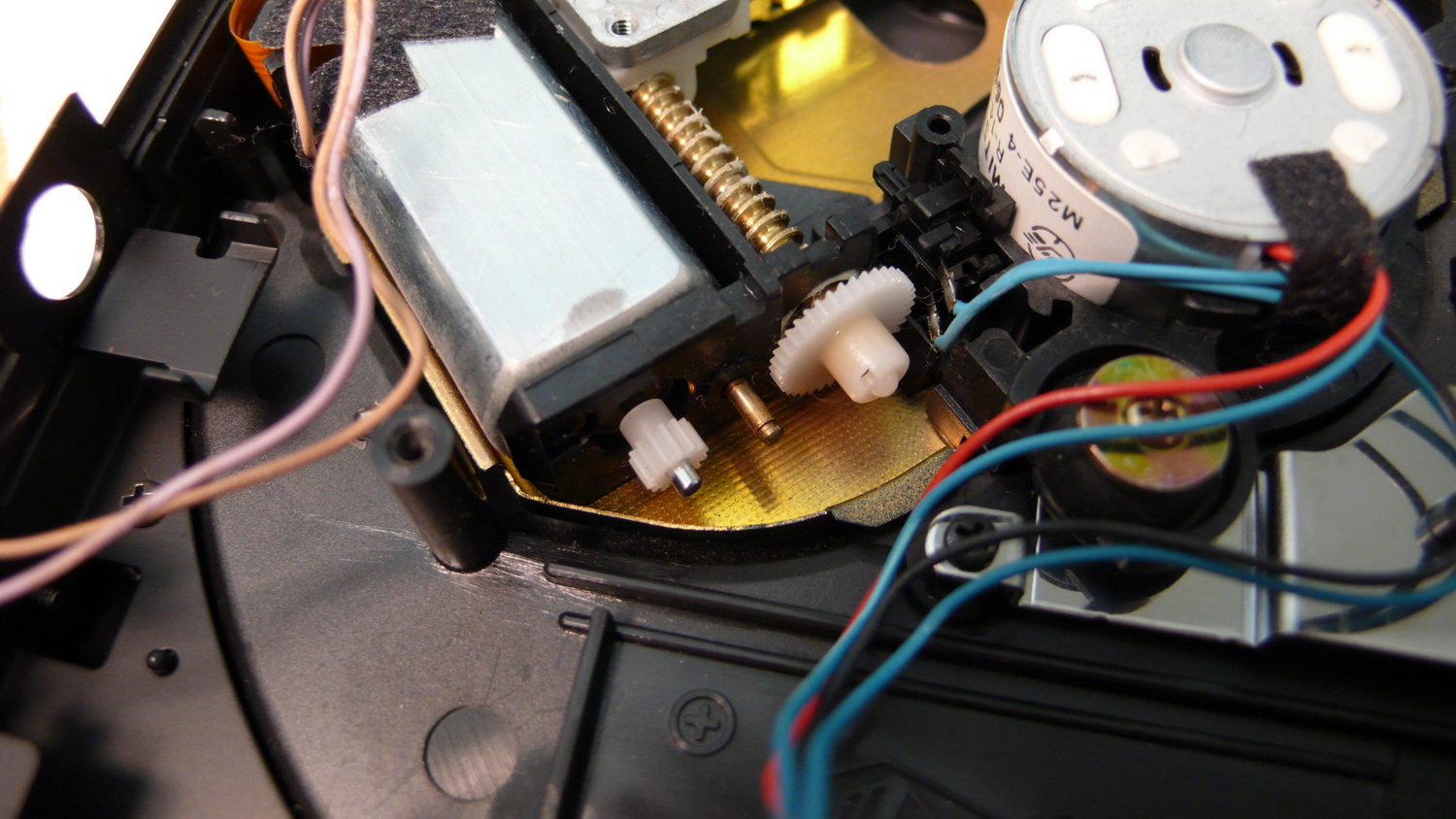
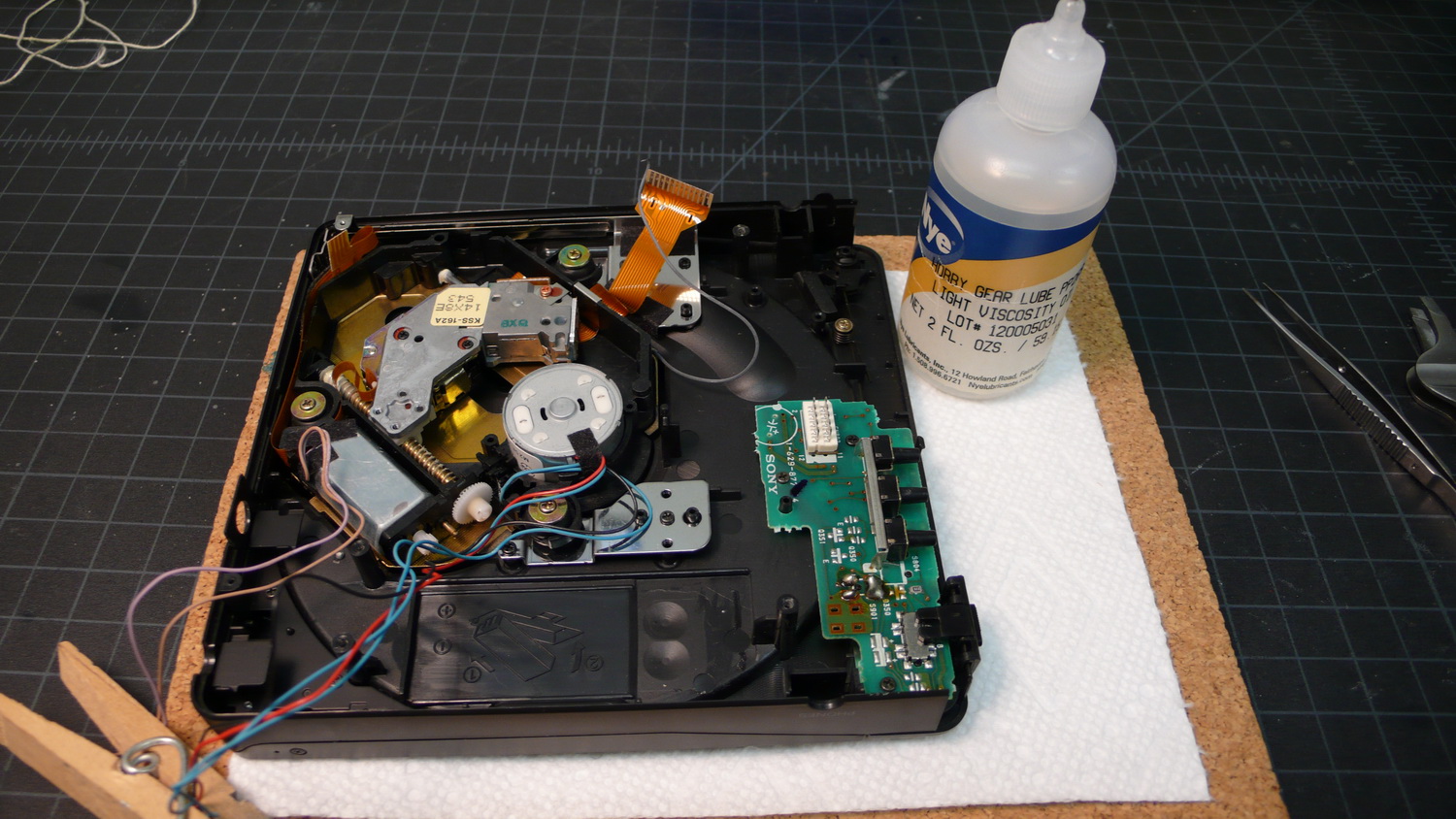
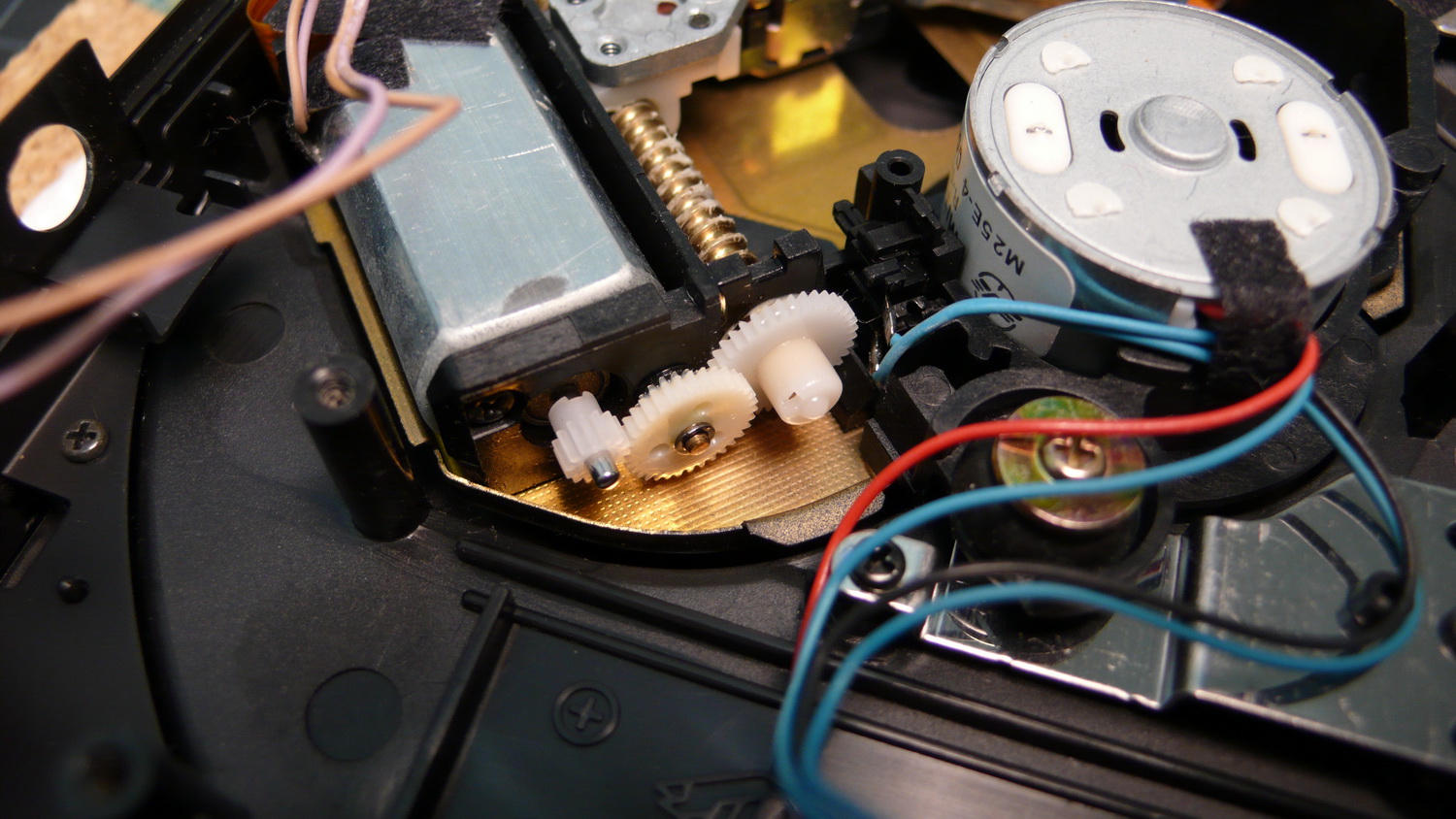
new spindle motor guarantees another decade of smooth play: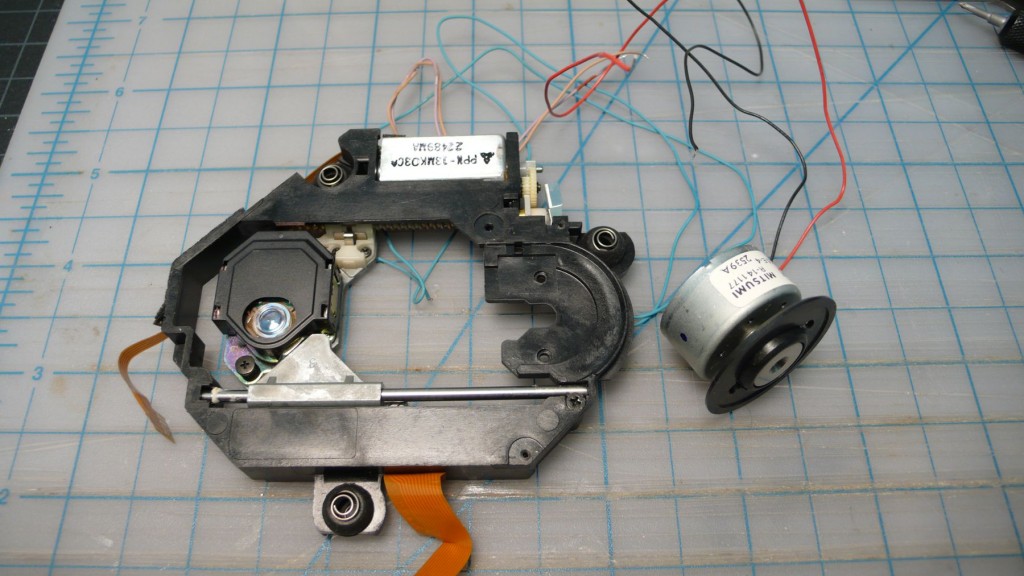
All SMD caps (red marker) are dead and must be changed. Red arrows point at mismatched C220 and C120 caps.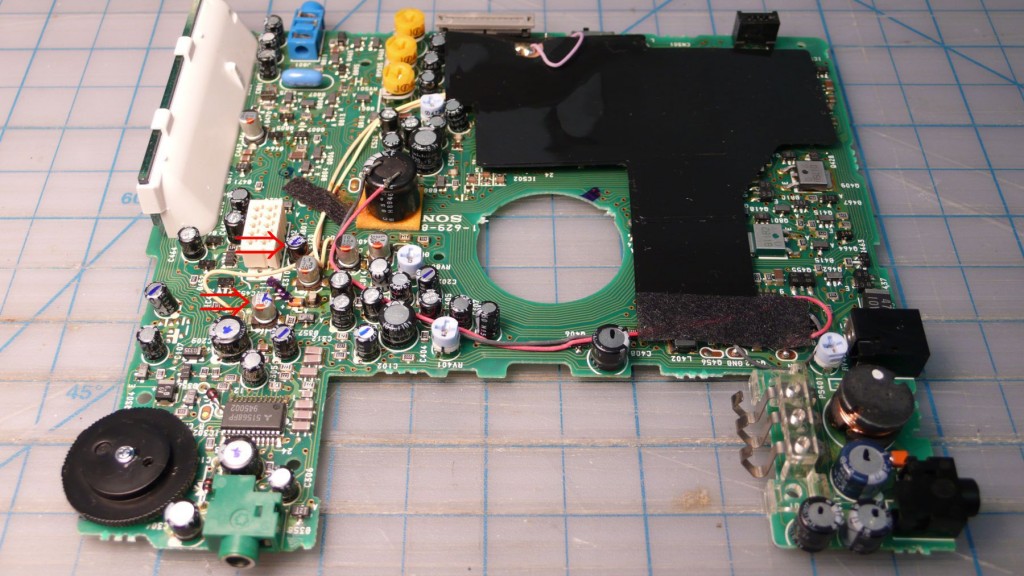
All power caps and analog circuit caps (blue marker) were exchanged for fresh Rubycon and audio-grade Nichicon electrolytics.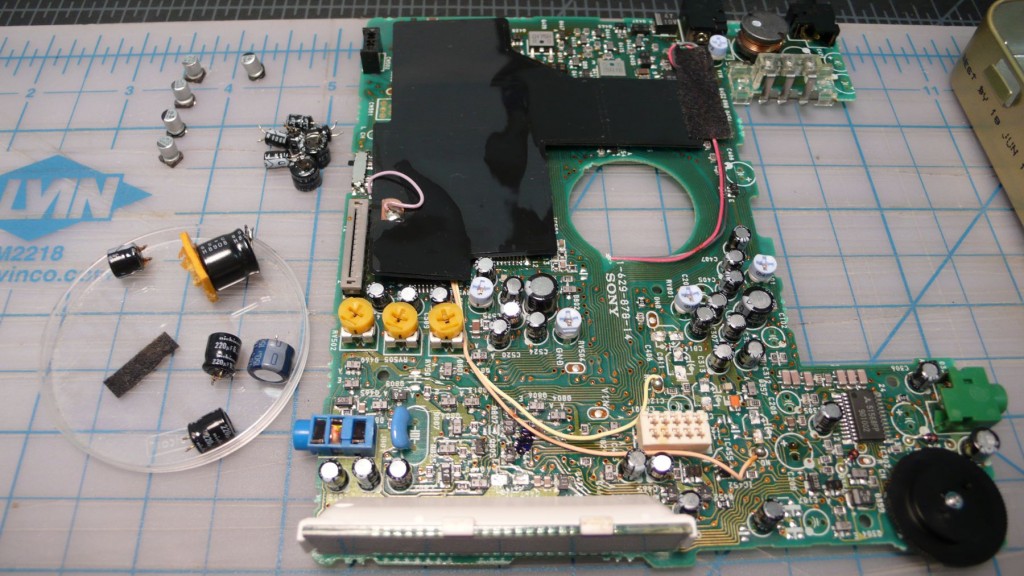
Once all leaking/old caps had been removed and board cleaned, it is a good idea to make sure that all traces of acid got neutralized. Use a sludge of household baking soda, then wash the board with isopropyl alcohol: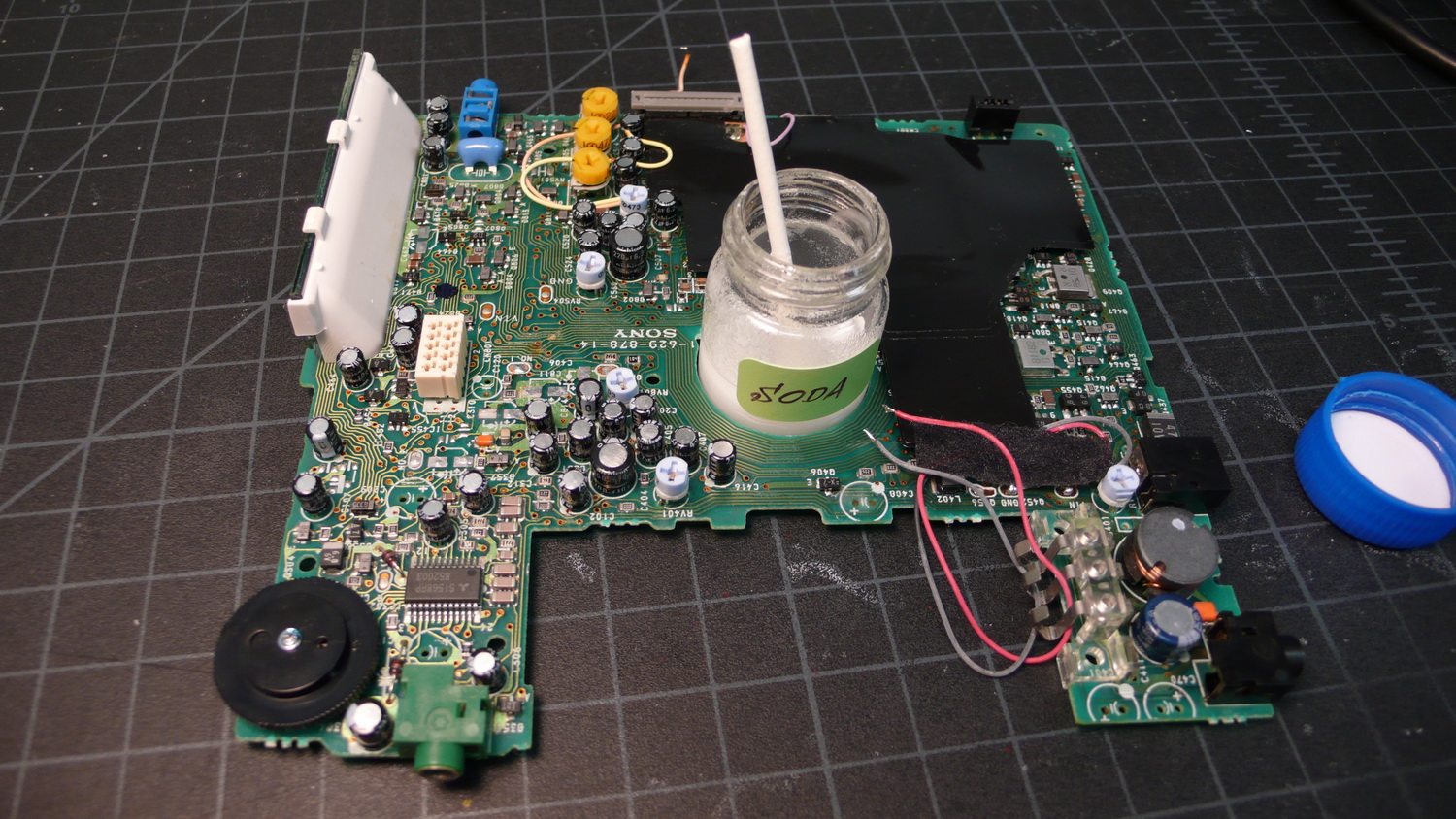
This particular D-90 got the famous Black Gate coupling capacitors (black arrows): the last electronic part between CD player and the headphones. You may also notice that now both C220 and C120 (red arrows) are of the same type and value.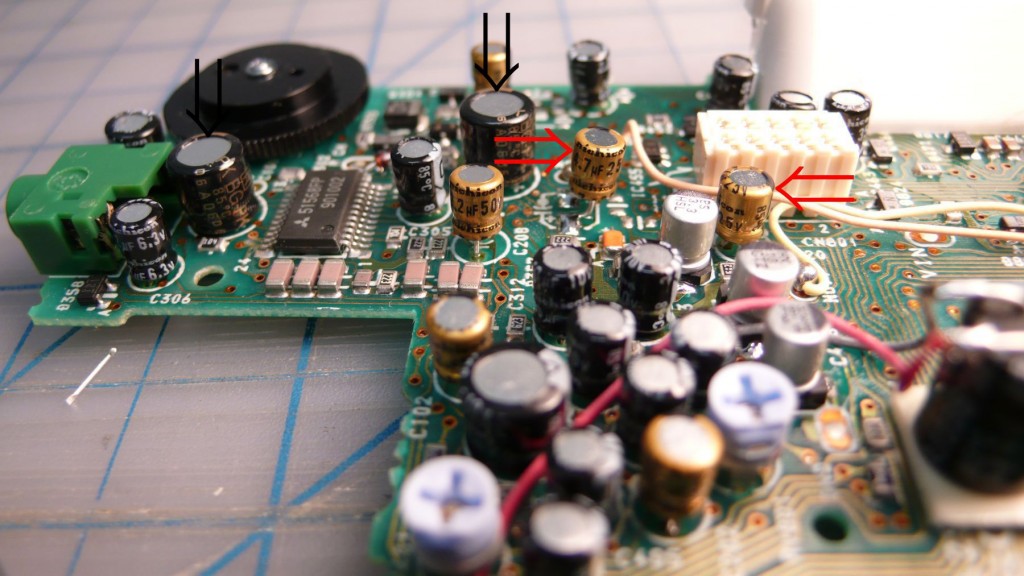
Fun part of restoration process: electronic adjustments: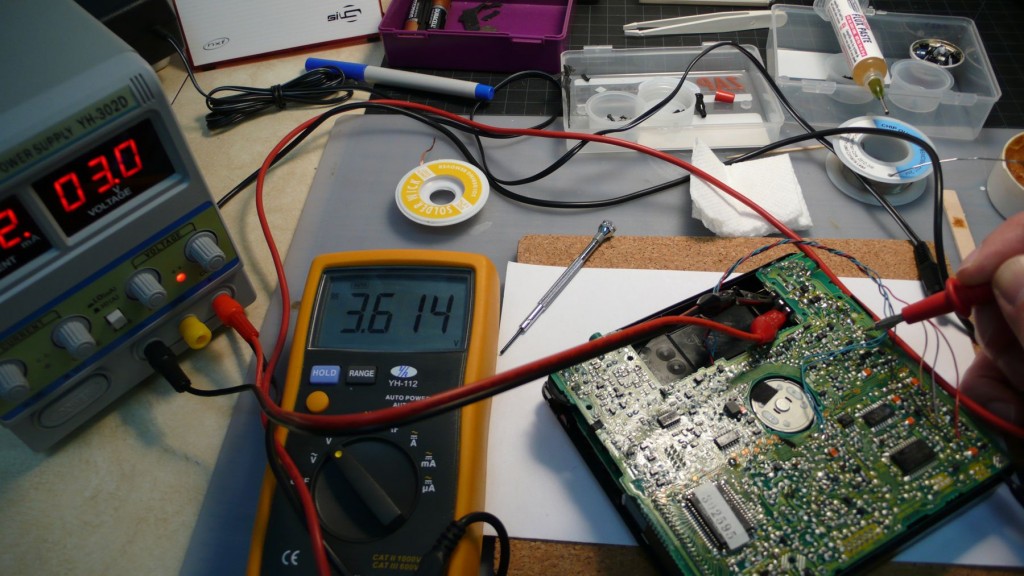
More info, especially on laser exchange and alignment can be found at KaosunCD.com
The final step of Resurrection/rejuvenation process is a “break in”. Discman is set for a few hours of continuous play: